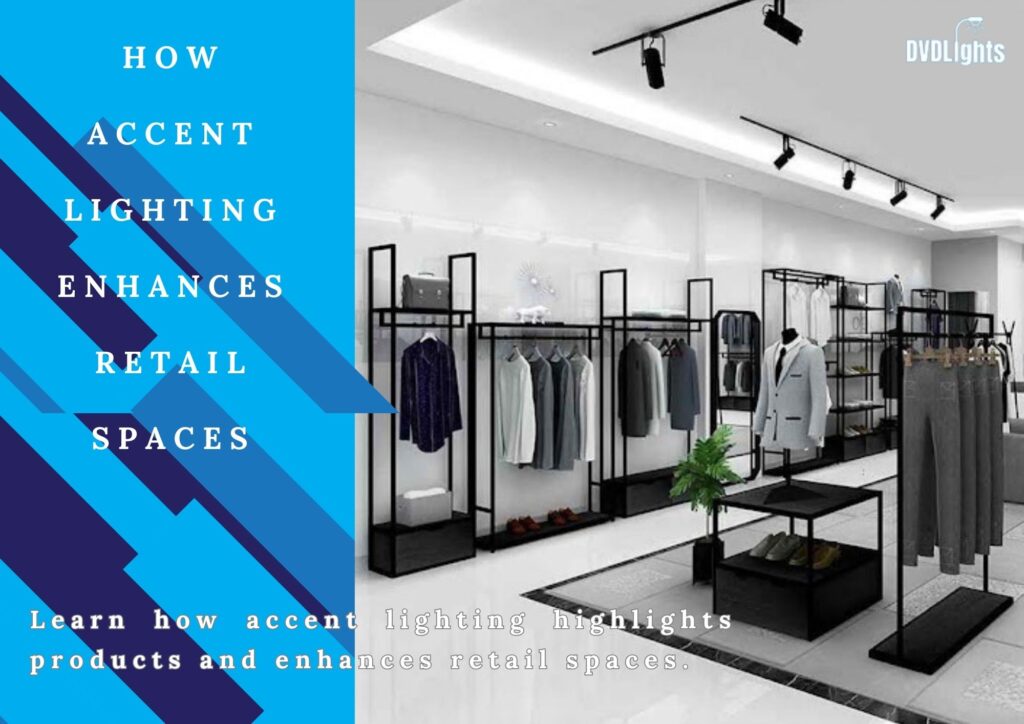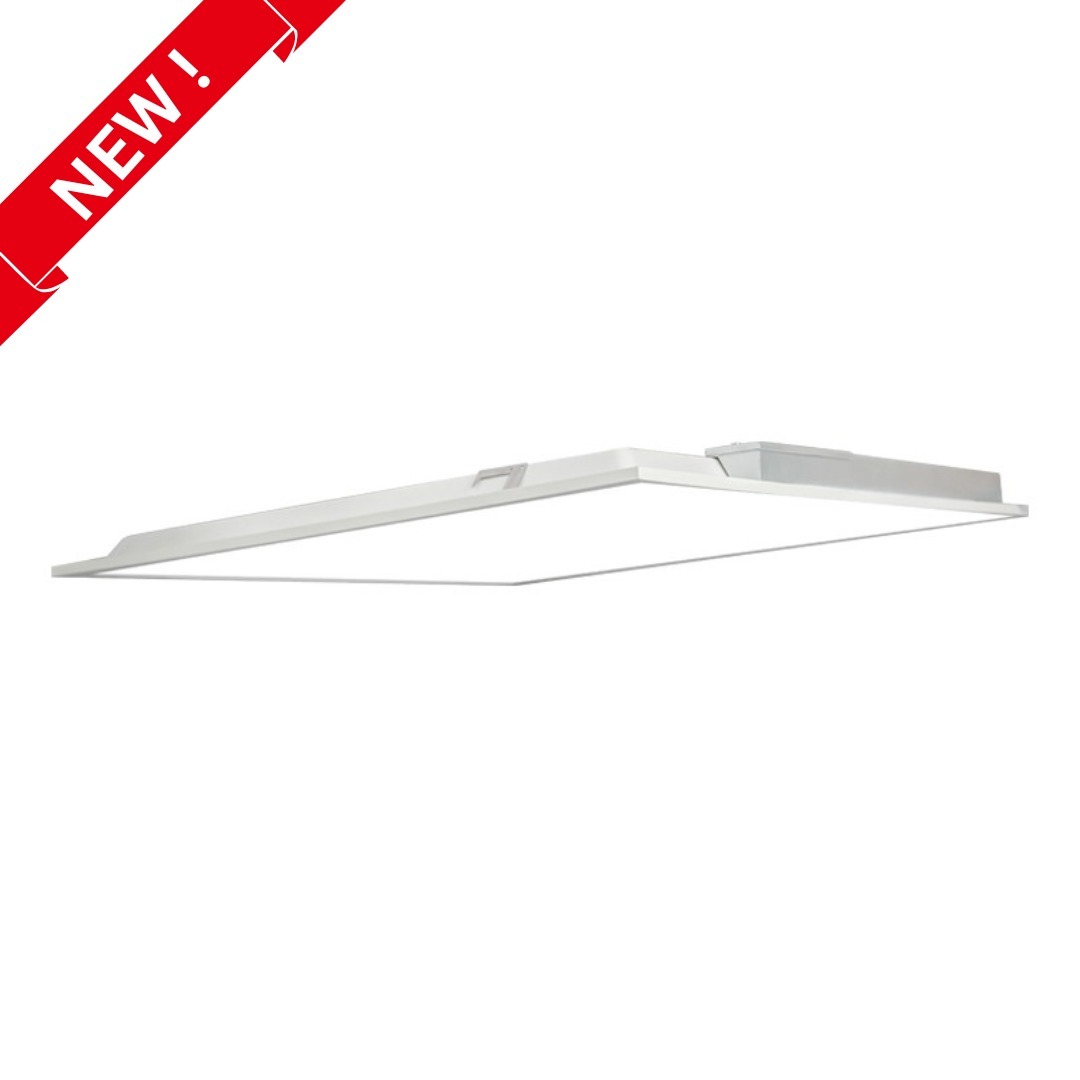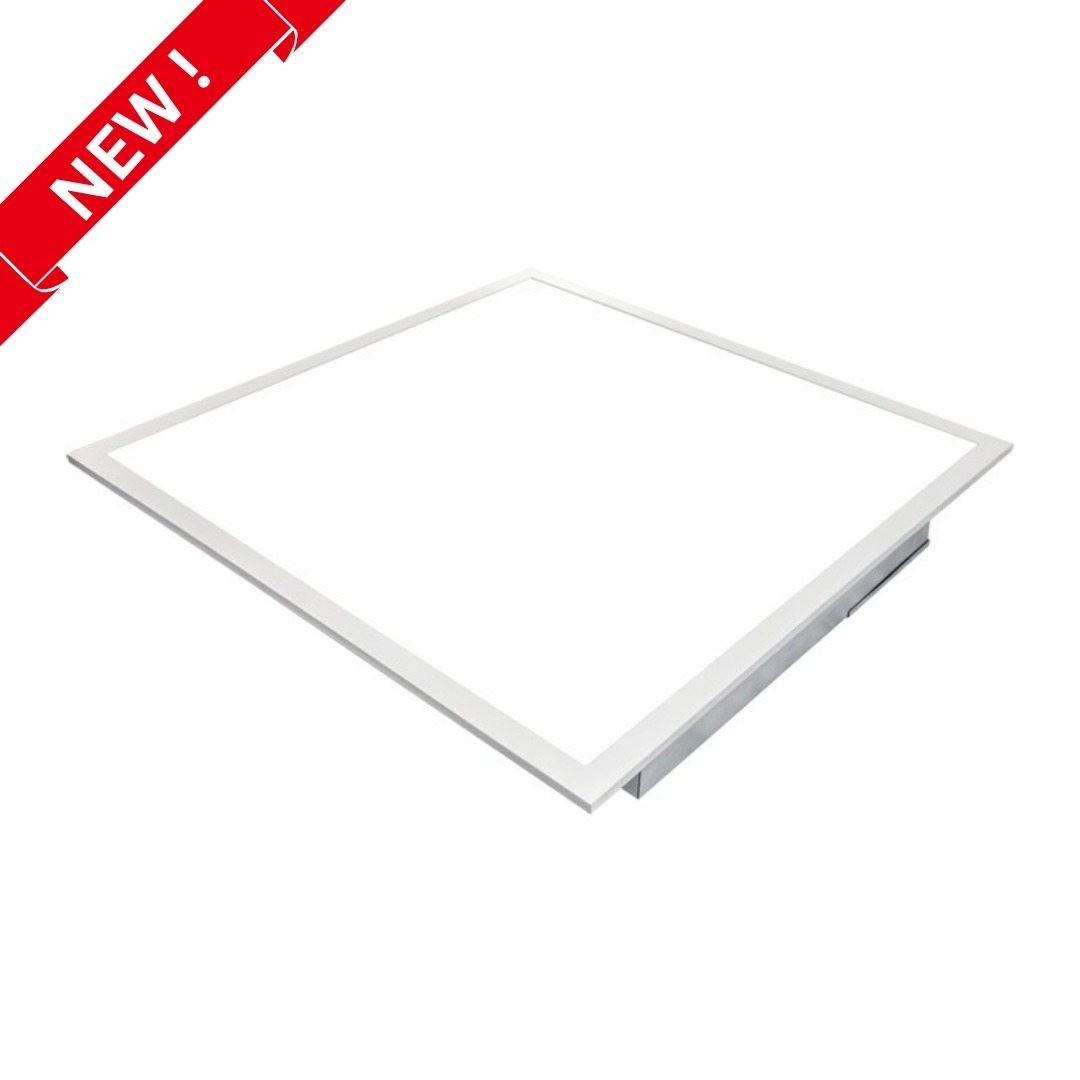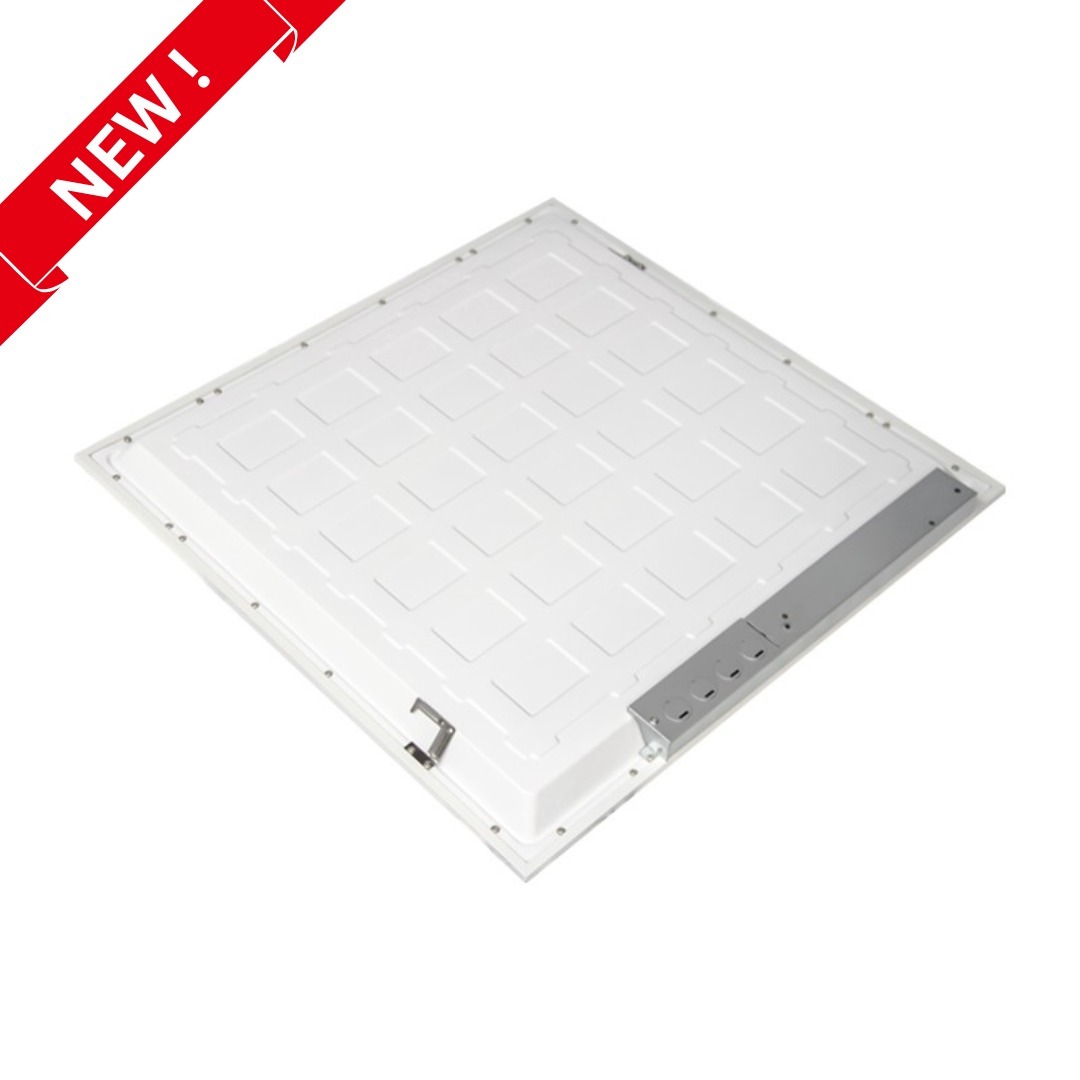Lighting plays a crucial role in shaping the atmosphere and overall shopping experience in any retail space. Among the various types of lighting, accent lighting stands out for its ability to draw attention to specific products, create focal points, and enhance the visual appeal of your store.
What is Accent Lighting?
Accent lighting is a targeted form of illumination designed to highlight specific areas, products, or features within a retail environment. Unlike ambient lighting, which provides general illumination, accent lighting is more concentrated and often used to create visual interest and direct customers’ attention to particular products or displays.

Photo from Emir Dekoratif via Pinterest
Why is Accent Lighting Important in Retail?
Accent lighting is a powerful tool in retail lighting design because it helps to showcase products in their best light (literally). By emphasizing key merchandise, accent lighting can guide customers’ gaze, making it easier for them to notice and appreciate your store’s offerings. This is particularly important in a retail environment, where the competition for attention is high, and every detail counts.
Enhancing the Retail Experience with Lighting
The importance of lighting in retail stores cannot be overstated. Properly designed lighting can influence customer behavior, enhance the overall shopping experience, and even increase sales. Accent lighting, when used effectively, can make your store feel more dynamic and engaging. It adds depth and dimension to the space, making it more visually appealing and inviting.


Photo from Retail Design Blog via Pinterest
Accent Lighting vs. Ambient Lighting in Retail Stores
While accent lighting focuses on specific areas, ambient lighting in retail stores provides the overall illumination necessary for customers to navigate the space comfortably. The balance between these two types of lighting is essential. Too much ambient lighting can wash out the impact of accent lighting, while too little can create an unwelcoming atmosphere. A well-thought-out lighting plan integrates both ambient and accent lighting to create a harmonious and attractive retail environment.
2 Types of Led lighting for Retail Store
Having LED downlights and LED panel lights in a retail store is crucial for several reasons, primarily centered around enhancing the shopping experience, improving energy efficiency, and creating a visually appealing environment. Here’s why they are important:
1. LED Downlights
- Focused Illumination: LED downlights provide targeted lighting, which is ideal for highlighting specific products, displays, or areas within the store. This focused illumination draws customers’ attention to particular items, enhancing product visibility and appeal.
- Versatility: Downlights can be installed in various parts of the store, from shelves to display cases, creating a dynamic and layered lighting effect. This versatility allows retailers to adapt lighting to different sections of the store, improving overall aesthetics.
- Energy Efficiency: LED downlights are highly energy-efficient, consuming less power than traditional lighting. This efficiency translates into cost savings on energy bills, which is crucial for maintaining profitability in a retail environment.


2. LED Panel Lights
- Uniform Illumination: LED panel lights provide even and widespread lighting, ensuring that the entire retail space is well-lit without any dark spots. This uniformity is essential for creating a welcoming and comfortable shopping environment.
- Modern Aesthetic: LED panel lights offer a sleek and modern look, enhancing the store’s overall design. They can be integrated seamlessly into ceilings, providing a clean and minimalist appearance that aligns with contemporary retail design trends.
- Long Lifespan and Low Maintenance: LED panel lights have a long operational life and require minimal maintenance, reducing the need for frequent replacements and associated costs. This durability is especially beneficial in a retail setting, where consistent lighting is essential for maintaining the store’s ambiance.


Enhanced Visual Appeal
- Product Highlighting: LED downlights can be strategically placed to highlight key products, creating focal points that draw customers’ attention. This helps in showcasing featured items, promotions, or new arrivals.
- Uniform Lighting: LED panel lights provide a broad, even light distribution, eliminating dark spots and ensuring the entire store is well-lit. This creates a welcoming and comfortable shopping environment.
- Color Rendering: LEDs have excellent color rendering capabilities, meaning they display product colors more accurately. This is crucial in retail, where the appearance of products can significantly influence buying decisions.
Energy Efficiency
- Lower Energy Consumption: LEDs consume significantly less power compared to traditional lighting options like incandescent or fluorescent lights. This results in reduced energy bills, which is particularly important for retail stores that require long operating hours.
- Longer Lifespan: LED lights have a longer lifespan, reducing the need for frequent replacements. This not only cuts down on maintenance costs but also minimizes disruptions in the store.
Improved Customer Experience
- Comfortable Shopping Environment: The role of lighting in retail spaces it enhances the overall ambiance, making the store more inviting and comfortable. A well-lit store can make customers feel more at ease, encouraging them to spend more time browsing.
- Visual Comfort: LEDs provide flicker-free lighting, reducing eye strain for both customers and staff. This is particularly beneficial in creating a pleasant shopping experience.


Photo from Retail Design Blog via Pinterest
Versatility and Flexibility
- Design Flexibility: LED downlights and panel lights come in various shapes, sizes, and designs, allowing retailers to customize the lighting to match the store’s aesthetic and branding.
- Adjustable Lighting: Many LED downlights are dimmable or can be adjusted in color temperature, enabling stores to create different moods or adapt the lighting to different times of the day or types of merchandise.
Sustainability
- Environmentally Friendly: LEDs are more environmentally friendly compared to traditional lighting, as they contain no toxic elements like mercury. Using LEDs supports sustainability efforts and can appeal to eco-conscious customers.
Cost-Effective in the Long Run
- Return on Investment (ROI): Though the initial investment in LED lighting might be higher, the long-term savings in energy costs and reduced maintenance make it a cost-effective choice for retail stores.
Compliance and Safety
- Compliance with Standards: Many LEDs meet or exceed lighting standards for retail spaces, ensuring that the store is compliant with regulations. Additionally, LEDs emit less heat, reducing the risk of fire hazards.
Implementing Accent Lighting in Your Retail Store
To make the most of accent lighting in your retail store lighting design, consider the following tips:
- Identify key areas and products: Focus your accent lighting on high-priority displays, such as new arrivals, featured items, or promotional products.
- Choose the right fixtures: Track lighting, spotlights, and wall-mounted fixtures are all popular choices for accent lighting in retail.
- Adjust the intensity: The brightness of your accent lighting should be sufficient to draw attention without overpowering the rest of the store’s lighting.
Customization and Flexibility in Lighting Design
One of the key advantages of accent lighting is its ability to be customized and adjusted based on changing displays and seasonal promotions. Retailers can invest in flexible lighting systems, such as track lighting or adjustable spotlights, which can be easily repositioned to accommodate new layouts or highlight different products. This adaptability ensures that your store’s lighting design remains fresh and relevant, keeping customers engaged and interested every time they visit.
The Role of Color in Accent Lighting
Color plays a crucial role in accent lighting, as it can significantly influence how products are perceived. Warm lighting, for example, can make a space feel cozy and inviting, which is ideal for stores selling home goods or clothing. Cool lighting, on the other hand, can create a modern and sleek look, perfect for tech or high-end fashion stores. Retailers can experiment with colored lights or gels to create specific moods or to align with branding elements, further enhancing the shopping experience.
Integration with Smart Lighting Systems
Modern retail spaces are increasingly integrating smart lighting systems that allow for greater control and automation of accent lighting. These systems enable retailers to program lighting schedules, adjust brightness levels, and even change colors remotely. Smart lighting can be particularly useful for creating dynamic, interactive displays that change throughout the day or in response to customer movements. This not only makes the shopping experience more engaging but also ensures that the store is always presented in the best possible light.


Photo from Retail Design Blog via Pinterest
Case Studies of Successful Accent Lighting
Including real-world examples or case studies of retailers who have successfully implemented accent lighting can provide valuable insights for readers. Highlight stores that have seen a noticeable increase in sales or customer satisfaction after revamping their lighting design. Discuss the specific strategies they used, such as focusing on key product displays, using color temperature to enhance product appeal, or integrating smart lighting solutions. These examples can serve as inspiration for other retailers looking to improve their lighting design.
5 FAQs
- What is the difference between accent lighting and ambient lighting in a retail store?
Accent lighting is focused on highlighting specific products or areas, while ambient lighting provides general illumination throughout the store.
- How can accent lighting influence customer behavior in a retail setting?
Accent lighting draws attention to particular products, making them more noticeable and appealing, which can encourage purchases.
- What types of fixtures are best for accent lighting in retail spaces?
Track lighting, spotlights, and wall-mounted fixtures are commonly used for accent lighting in retail stores.
- How do I balance ambient and accent lighting in my store?
The key is to ensure that ambient lighting provides sufficient overall illumination without diminishing the impact of your accent lighting.
- Can accent lighting be used in all areas of a retail store?
Yes, accent lighting can be used throughout a retail store, but it’s most effective when focused on key displays, promotional areas, or featured products.
Conclusion
Accent lighting is essential in retail design, enhancing product visibility and creating a more engaging shopping experience. By strategically highlighting key items and balancing with ambient lighting, retailers can draw customer attention and boost sales. Modern LED solutions and smart systems offer flexibility, allowing stores to adapt their lighting to stay visually appealing and energy-efficient. Overall, accent lighting is a powerful tool for enhancing store atmosphere, improving customer satisfaction, and driving business success.




















